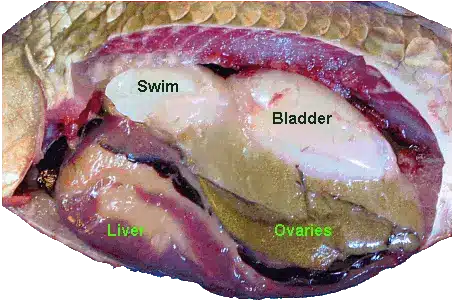Did you know that people anaesthetise fish? Fish are sedated before they are killed commercially, but people also have valuable pet fish or display fish (like in an aquarium) that sometimes get sick and need veterinary care. There are a number of basic diagnostic techniques for investigating what could be wrong with a sick fish, and medicine or even surgery can be used to treat them.
Fish anaesthesia is surprisingly like mammalian anaesthesia. For a dog, the anaesthetic is vaporised and they breathe it in through their lungs via the anaesthetic machine. For a fish, it's basically the same: the drug is dissolved in the water rather than the air, and they "breathe" it in through their gills. If a dog is too deep, you give it pure oxygen to breathe for a while; for a fish, you put them into fresh water to breathe for a while.
Unfortunately for me, I managed to pick crappy fish for my partner and myself. They would not go to sleep. As they get more sedated, they lose their balance reflexes (float sideways and stuff), but it can freak them out a little as they go down. So one would have a panic attack, and that would wake up the other one, which was just drifting off. Then the first one would calm down, but the second one got a fright. The professor came by to increase the dose three times after the first lot! We spent at least half of our lab time staring into the bucket waiting for them to be deep enough to work with. It didn't help that we kept thinking they were fine, picking them up, and then they would flop around and wake up and we'd have to put them back. As an aside, the anaesthetic we were using is derived from clove oil, so the lab smelled like a strange combination of live fish and cloves.
Once they were asleep, we could take them out and do things to them. They survive in the air because their metabolism and respiration is slowed down so much under anaesthesia. Normally you have to keep them really wet to protect their skin, however. Our lab was designed to be a non-recovery lab, using fish at the end of their lives and such, so we didn't worry about that.
First thing we did was take blood. There's a vein in their tail, right in front of the fin, and we spent almost the entire rest of our lab time trying to stab it. If the needle goes through a scale on the way in, you plug up the thing with keratin and have to get a new needle. Little fish have little veins and not a lot of blood, so it was a pretty frustrating endeavour. The other site I tried was the dorsal aorta, which sounds really scary: you stick the needle into the back of their mouths, and that's apparently right where the aorta comes off the heart. I blindly stuck mine in and actually got an entire drop of blood right off the bat, but everyone else I talked to had a much harder time with that one.
Another thing we did was skin scrapes, which is apparently quite useful as fish can get protozoal infections, and if you put the mucus on a slide, you can see the protozoa move around. Our fish were not so interesting.
The last thing we did with the live fish was a gill biopsy. If you don't know anything about fish physiology, I have to tell you, gills are cool. They look cool, they are designed cool, they are just cool. You can also snip off a tiny piece with scissors, put it on a slide, and have a look for disease or degeneration that might be making the fish sick (it would be like people having a lung problem). Electron micrograph photo:
The last thing we did was euthanise the fish and do a post mortem. My partner and I had basically no time to do this, so we only had a quick look before lab ended. They have inflated swim bladders next to the kidney, that was the neatest thing, like a little balloon inside their body cavity. They have teeny tiny little spleens, massive massive ovaries filled with eggs, a simple two chambered heart, and skinny twisty intestines. From google:


No comments:
Post a Comment